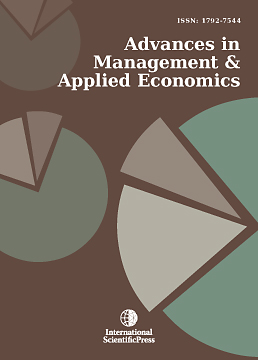Advances in Management and Applied Economics
Main Determinants Influencing Inward and Outward Foreign Direct Investments in Thailand: Comparisons and Vital Implications
-
 [ Download ]
[ Download ]
- Times downloaded: 8379
Abstract
Foreign direct investment (FDI) has played an important role in the evolution of globalization and is the cornerstone of industrial expansion and economic development. From 1988 to 1990 till now, Thailand has been one of the main destinations of FDI, namely inward FDI (IFDI). However, outward foreign direct investment (OFDI) increased rapidly from 2003 to 2011, and it continues to grow. Although initially a net importer, Thailand has transformed into a net exporter of direct investment in 2011. Since 2003, Thailand has entered a stage of re-emergence of OFDI, and this growth trend of OFDI will continue in the future. The purpose of this study is to investigate the main determinants of Thailand's IFDI and OFDI, and apply a panel data model to determine which determinants have a significant impact on Thailand's IFDI and OFDI. We considered the FDI flows between Thailand and its five FDI partners (Japan, Hong Kong, the Netherlands, Singapore and the United States) from 1997 to 2014, where IFDI was 1997-2014, and 2004-2014 was OFDI. Regarding the determinants of Thailand's IFDI and OFDI, the market size (relative per capita GDP), Thailand's openness, relative R&D intensity and bilateral trade agreements have a positive impact on FDI decisions for both IFDI and OFDI. Relative wages and geographic distance have opposite effects on Thailand's IFDI and OFDI. Specifically, our empirical results show that market size is the most important determinant of IFDI inflows into Thailand, while the most important determinant of Thai OFDI is bilateral trade agreements.
JEL classification numbers: F14, F23, F43.
Keywords: Foreign Direct Investment, Panel Data Model, Fixed Effects, Generalized Least Squares (GLS).
